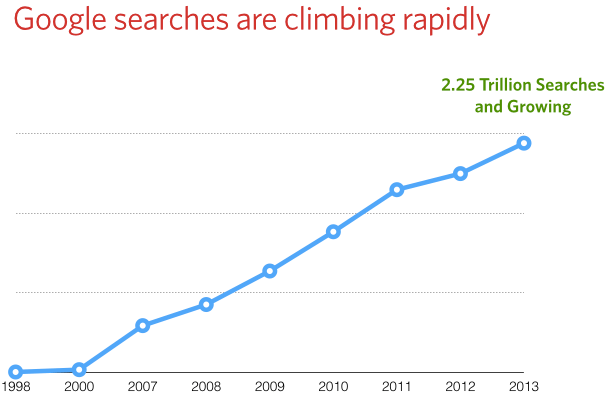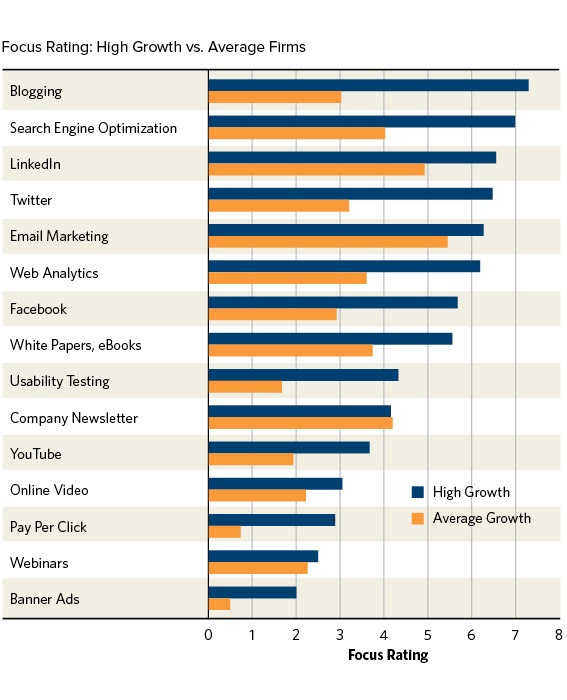In David Meerman Scott’s classic New Rules of Marketing and PR, he discusses the changes that have redefined the world of marketing. David has been kind enough to join us for both a webinar and a Visible Expert profile, so as a bit of an homage, we decided to use his New Rules as a springboard to discuss the changing rules of marketing professional services.
The professional services world isn’t immune to the marketing transformations sweeping across industries today, but in this post, we’re going to focus specifically on how a variety of shifts are impacting professional services – and changing the game for firms seeking to become more visible.
Marketing professional services – what does it mean?
First, let’s think about what we mean when we say “marketing professional services.” This process encompasses traditional marketing practices, business development for professional services firms, content marketing, social media, and much more.
The fact is, professional services marketing is an ever-expanding universe of platforms and techniques. You can fill an entire book exploring the distinctive complexities of professional services marketing, but the important takeaway here is that effective professional services marketing is diverse. It means meeting your prospective clients where they are…and more and more, that means online.
Download the “Visible Firm Guide” for Free
How do we know this works? One way is to look at the online tool usage of high growth and average growth firms.
High growth professional services firms place a high degree of emphasis on a wide range of online tools, whereas average firms’ efforts are more measured. In fact, firms that generate at least 40% of their leads online grow more than four times faster than firms with no online lead generation.
For another example of online acceleration, annual Google searches have risen from less than 800 billion in 2009 to over 2.25 trillion today.

To connect with clients – to successfully meet them where they’re looking for solutions and providers – you have to know who they are and how they are seeking information today. And that’s where the new rules of professional services marketing come in.
Rule 1: Remember that a whole new generation has grown up in the online world.
The impact of this shift on professional services marketing is hard to overstate. The new generation of professionals is used to constant and immediate access to informative, easy-to-use content.
Anyone who has been alive since the eighties has grown up with an online-influenced workplace, and these professionals are now rising into positions of management. The online world is a reality they’ve always known – and that shapes the way they do business in fundamental ways.
The days when you could ignore the Internet, or even treat it as a secondary marketing concern, are well and truly gone.
Rule 2: In a workplace full of time-starved executives and professionals, efficiency and convenience are key.
Given the impacts of recent productivity improvements, recessions, and mounting competitive pressures, organizations today tend to operate with lean staffs. It’s safe to assume that everyone you deal with in a potential client organization is short on time.
This is one reason more and more professionals tend toward quick, convenient, and asynchronous methods of communication and information-gathering. Younger professionals do prefer email and online search – but it’s not just a matter of preference. These tools allow for greater efficiency in a time-strapped business landscape.
Rule 3: People have the expectation that they can access exactly what they need exactly when they need it.
Google can provide a staggering amount of information upon request. That creates an expectation of information availability. Today, professionals are used to finding exactly, specifically what they’re looking for. So if they can’t find the right information about your firm – your specialties, say, or who you serve – they’re not going to spend a lot of time digging. It’s important to increase your visibility in search, making relevant information about your firm as accessible as possible.
Download the “Visible Firm Guide” for Free
Some firms fall into the trap of vagueness – because they don’t want to limit future business possibilities, they play coy about what exactly it is that they do, instead relying on broad buzzwords or generalities. This is a big mistake. You’ve probably heard that you can’t be everything to everyone, and it’s as true in professional services as anywhere else. By defining what you do clearly and specifically, you make it much easier for clients to find you.
Rule 4: Professional services buyers expect a high degree of interaction and responsiveness.
Remember how important time is to the new generation of professionals? Another consequence of this time-sensitivity is that professional services buyers expect to be able to send you an email and get a response back quickly. They want the ability to interact with you on social media at will, get any of their questions answered, and have it all happen quickly.
In practical terms, that should mean you’re highly responsive to emails and monitoring your presence on platforms like LinkedIn or Twitter. It should also be easy to contact you through your website.
Rule 5: Professional services buyers expect transparency.
As a professional services firm, your buyers expect to know your specialties, your experience, your team, your way of doing business. They expect to know what they’re getting when they buy services from you – if you’re cagey about what you do, it’s going to leave them skeptical.
Once upon a time, a firm could bluff its way into a market by exaggerating its experience. Today, that’s a recipe for disaster. The Internet makes it easier than ever for potential clients to follow up on your experience in detail – anything less than total transparency is self-defeating.
Rule 6: Free education is the rule – not the exception.
In a world where so much information is freely available online, self-education with online materials has become the standard. Your buyers expect to be able to learn about a topic by simply going online and searching – and they’re not accustomed to paying for that information.
As a professional services firm, you may be reluctant to share your knowledge — your “secret sauce.” But if you don’t offer your target audience robust, useful education, then another firm will. And when buyers are ready to buy services, they’re going to think of the folks who educated them.
This is among the most important of the new rules of marketing professional services: you must educate. But think of it as an opportunity to show the marketplace what you know and how you think. Creating free educational content is a highly effective way to make your expertise more visible to the people who need it most.
Rule 7: Your firm must live out your messaging.
If you provide a design service, potential clients will naturally expect your website and online presence to be highly polished. Everything you do on the web should reflect your quality of design. Likewise, if you say that your firm is responsive and client-centered, your audiences will expect your actions to embody those promises – even before they’ve engaged you.
With more information about firms available to potential buyers, it is more important than ever that you actions align with your messaging. If you can demonstrate this – whether through your design, your swift responses, or other everyday activities – you’ll build your firm’s credibility. If not, the gap between your words and actions will be obvious to the marketplace.
Rule 8: Buyers are reluctant to be sold to or manipulated.
 The rising generation of professionals are less responsive to traditional sales approaches. Grabbing someone’s time and starting to pitch them – this is growing less effective than it used to be. Instead, it’s important to be where your target audience looks, understand their concerns, and provide solutions to help build your credibility.
The rising generation of professionals are less responsive to traditional sales approaches. Grabbing someone’s time and starting to pitch them – this is growing less effective than it used to be. Instead, it’s important to be where your target audience looks, understand their concerns, and provide solutions to help build your credibility.
This new approach is called “inbound marketing.” By engaging your audience through social media and educational content, showing them your areas of expertise, you give potential clients a reason to follow your firm. As they engage with more of your content, they become more familiar with you – on their own time, and according to their own challenges or interests. When they’re ready to buy, many of these clients will come to you, already knowing exactly what you do and how you do it.
Rule 9: Your firm must be easy to find online.
If a potential client can’t find you online, they won’t assume that they’ve searched insufficiently and need to keep looking. They’ll assume that there’s something wrong with you – perhaps that you’re not experienced or contemporary enough to show up in search results.
For many of today’s professional services buyers, visibility suggests credibility – and a lack of visibility makes you suspect. You should be easy to find on social media platforms where industry conversations happen such as LinkedIn and Twitter. And your website should be designed to boost your visibility in search. Otherwise, buyers won’t spend a lot of time trying to locate you.
Rule 10: Your firm must interact with buyers in their preferred mode.
You might prefer to talk to potential clients on the phone. That’s fine, but they might prefer to communicate through email, form fills, instant messaging, or social media, either because it’s what they’re used to or because it’s more efficient or convenient for them. Clients are going to have their own preferences, and they will expect you to be available by the mode they prefer.
What’s more, our most recent research paints a clear picture of how professional services buyers prefer to gather information about a firm.

Websites, online search, social media – these are the new reputational frontlines. These are the places where clients go for information – and where your firm needs to be.
Conclusion
When you follow the rules above, making yourself available on the web and generating more leads online, you can expect to grow faster and be more profitable. That’s the nature of the professional services marketplace today – firms that understand the new rules are the ones that get ahead and lead the industry.
Learn more integrating the new rules of marketing and download the free ebook below, Online Marketing for Professional Services.
On Twitter and LinkedIn? Follow us @HingeMarketing and join us on LinkedIn.



